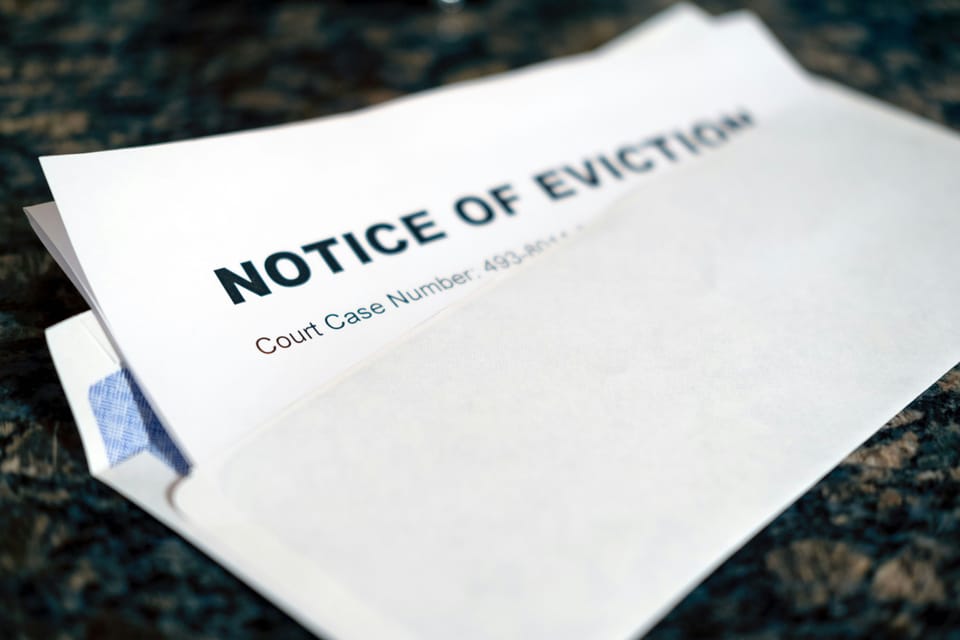Who is homeless in Fort Wayne? Mostly families + children

The first year city leaders in Fort Wayne provided a Winter Contingency shelter for homeless individuals, they expected to serve single men.
“We put together a plan, thinking that, based on previous things we had seen, the need was in beds for single men,” says Kelly Lundberg, Deputy Director of the City’s Office of Housing and Neighborhood Services.
But when the shelter opened that December, the people who showed up were a different demographic – one that might be facing homelessness at higher rates locally: families.
“So many families,” Lundberg says. “People are often highly attuned to homelessness as the men they might see on the sidewalks Downtown, but the reality is: Our homeless population is a lot of single moms and families.”
While there’s limited reliable local data on homelessness (for many reasons), the most recent data available indicates families make up 60% of Fort Wayne’s homeless population, and children alone account for 40%. At Just Neighbors, a nonprofit that offers a short-term emergency shelter for local families, children (ages 17 and under) make up about 85% of the clientele, according to Interim Executive Director Shirley Rork.
“Most of the families who enter our program are technically working and earning a ‘livable wage,’ too,” Rork says. “It’s just one catastrophe happened, and it snowballed out of control.”
This year, as many leaders believe homelessness is increasing in Fort Wayne (and nationwide), Rork and her team at Just Neighbors are celebrating 25 years of serving homeless families locally with a free block party on June 21. As part of the event, they’re inviting everyone to tour their facilities at 2325 Santa Rosa Dr., meet their team and gain a broader, more accurate perspective of what being homelessness in means in a city that prides itself on being "family friendly."
We sat down with Rork for a Q&A.
Tell us more about your background and how Just Neighbors has grown and evolved in recent years.
SR: I have been with Just Neighbors for going on 11 years now. I was a case manager when I started, then I became a program director, and I’ve been interim Executive Director since our last director took a new position in September.
Originally, Just Neighbors was a day center, so families would stay overnight with our church partners in the community, who would feed them and “adopt” them for a week at a time. Then, we’d pick them up during day to take them to our day center for services.
In 2009, community support and a capital campaign allowed us to move into our current site, so instead of us going to churches, now the churches come to us where they still support us and provide evening meals to families.
Currently, we can host 10 families at a time, which ends up being about 40 people. We don’t keep a waiting list, and we base preference on need, so families sleeping in a car are going to get priority over families sleeping in hotels. Unfortunately, we're always full, and we get calls every day for shelter, but we only have an open room about once every two weeks, so the need is much greater than the capacity.
As an “emergency shelter,” our goal is to help families get back on their feet within 45 days. We can extend that when the need arises, but because of how great the need is for space, we can’t let people stay as long as they would like. Our intake requests have probably increased about 10 percent for families this year compared to previous years, and our average stay is 37 days.
Can you give us an example of the factors Just Neighbors sees driving homelessness locally?
SR: Many factors contribute to homelessness, but a lot of what we’re seeing right now is the cost of living, especially for people who don’t have a support system to help them when something goes wrong. When people enter our system, we immediately do an intake assessment to ensure they have what they need to keep their kids in school or take care of their children. Then we focus on the parents, making sure they have all the necessary documents and insurance they need to move forward with stability. Once that’s established, we help them find employment, or improve their current employment situation, so they’re earning a sustainable wage for their family size.
The ability to find jobs that pay livable wages in Fort Wayne has gotten better in recent years; it’s the cost of housing that’s usually the biggest hurdle. On average, rent shot up $300 since the start of the pandemic, so imagine trying to budget for that as an elderly person on a fixed income or a mom with four kids who’s already making barely minimum wage. It’s just not realistic, and like most people, our clients often live paycheck-to-paycheck, so one minor setback could happen, and it could make them homeless quickly. Most residents in Fort Wayne who are “housed” have a support system of people they can turn to when they need to borrow $100 or need someone to pick up their kids from school. But when you don’t have that, that’s when people end up at our door.
Even before the pandemic, Fort Wayne had one of the highest eviction rates in the U.S. and Just Neighbors worked to reduce that. Tell us more about those efforts.
SR: We helped start the Eviction Intervention program at the courts where we provide staff five days a week and work with landlords, tenants and attorneys to help prevent homelessness before it begins. We also host eviction clinics twice a month, where tenants can come for resources, like meeting with attorneys.
What we’re seeing is not necessarily an increase in “unfair evictions” in Fort Wayne post-pandemic, but more of an increase in landlords seizing on opportunities to evict tenants, so they can increase the rent on their properties. They may have let a tenant pay late for years and years, but now they know they can raise the rent, so when the tenant pays late the next time, they’re evicted. Indiana is a landlord-friendly state, where most of the rights are in the landlord’s favor, so it is difficult for tenants to have any kind of leeway when it comes to renting.
Beyond Just Neighbors, what other important work do you see happening in this space locally?
SR: In my opinion, the best housing option for homeless families in Fort Wayne is Habitat for Humanity. They are by far the best solution to serving the population we work with, helping people where they’re at and helping them get to where they need to be to become homeowners. We need more affordable rent in Fort Wayne, but homeownership is the true goal. Even with rental housing. I would love to see more programs that are rent-to-own models.
Subsidized housing and childcare are also so greatly needed. A lot of our clients utilize Brightpoint’s childcare voucher program, and they wouldn’t be able to find employment without it because daycares are so unaffordable – even for people earning good incomes, much less for those who are living below the poverty line. Brightpoint and the city have also been working to bring more affordable housing to town, but it’s always an uphill battle. During the pandemic, we also had a large apartment complex in Fort Wayne – one of the few that used to accept Section 8 vouchers – get bought out by a different company and change its policies, so people can’t use vouchers there anymore. That left hundreds of people without a place to use their voucher, so more safe Section 8 housing is needed.
What other opportunities and needs do you see for Just Neighbors and the city going forward?
SR: One thing Just Neighbors is working toward is becoming an overnight emergency shelter that’s open year-round – not just a Winter Contingency Shelter, which we already offer in partnership with the city. We have two buildings onsite at our new location: One is an administrative building, and one is our shelter. Because of the extra space we have in our administrative building, we’re able to turn half of it into a Winter Contingency Shelter from December 1 - March 31, 7 p.m.-7 a.m. So individuals who are unable to access other shelters (because they’re often full during the winter) can come here, and on average, we have about two families per night. We’d like to be able to host families year-round in this space, but of course, programs need resources and staff, and funding is always a challenge.
Across Fort Wayne, in general, we could also use a safe place for people to park and not be harassed if they’re living in a vehicle. Most communities our size have spaces like that, so that’s something else Fort Wayne could offer.
Learn more at the Block Party
- June 21, 10 a.m.-4 p.m. at 2325 Santa Rosa Dr.
The family-friendly event features free hot dogs, games, prizes, a bounce house, live music by the band Checkered Past, and guided tours of the Just Neighbors family shelter. Rork says: “This celebration is about more than fun—it’s a chance for neighbors to come together, learn about the growing needs in our city, and discover how we can work together to provide shelter and stability for families in crisis.” Learn more.
